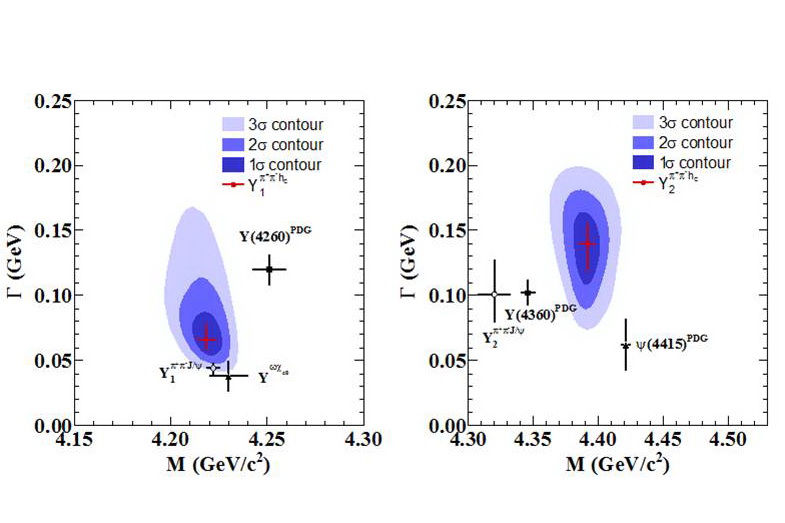

The Beijing Spectrometer Experiment (BESIII) has announced the observation of more new charmonium-like states.
The experiment measured the e+e-
The results were published in the latest issue of Physical Review Letters (March 3, 2017, Volume 118, issue 9).
As more and more vector particles have been observed between 4 and 4.6 GeV, and this is the mass region for many kinds of exotic hadrons containing a pair of charm-anticharm quarks, investigation of these states is high on the priority list for theorists.
The possibility of these new states being quark-gluon hybrids, tetraquark states, hadron molecules, hadro-charmonia, or something more exotic, needs to be further studied with the new measurements from the BESIII experiment.
The data analyzed in these papers were taken in two years during 2013 and 2015. With the same data sample, BESIII has previously discovered the charged charmonium-like states Zc(3900) and Zc(4020), as well as the X(3823).
BESIII is taking more data this year, looking for further discoveries in this region. With these data, the collaboration hopes to strengthen the study of exotic hadrons and better understand the quark confinement of the strong interaction.

Refrences:
Precise Measurement of the e+e?→π+π?J/ψ Cross Section at Center-of-Mass Energies from 3.77 to 4.60 GeV
Evidence of Two Resonant Structures in e+e?→π+π?hc